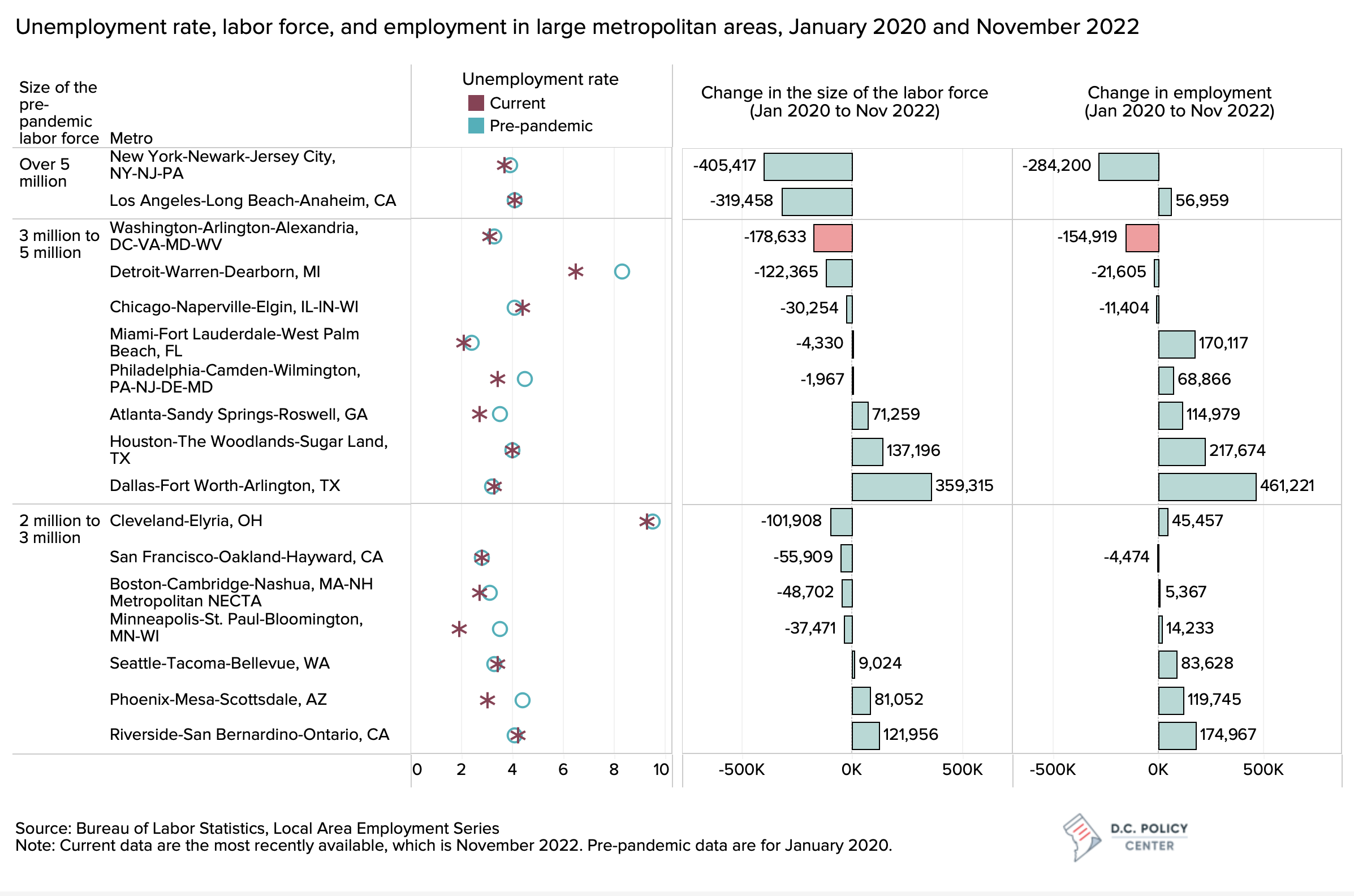After peaking in April or May of 2020, unemployment rates declined across large metropolitan areas, often to below pre-pandemic levels. For example, in the Washington metropolitan area, the unemployment rate increased from 3.4 percent in January 2020 to 9.6 percent in May 2020. But the most recent data release from the Bureau of Labor Statistics show that in November of 2022, the region’s unemployment rate was at a near-record low at 3.1 percent.
While a low unemployment rate is generally seen as positive news, how we got there also matters. In our region, the lower unemployment rate has not been driven by growing employment. Rather, it is the result of a shrinking labor force.
To wit, in November 2022 (the latest month for which data are available), total employment in the region remained at 155,000 below pre-pandemic levels. After losing about 440,000 jobs in the first few months of the pandemic, the region recovered nearly 245,000 jobs over the last 30 months. But, during the same period, the region’s labor force continually declined, and now stands at 3.35 million or, nearly 179,000 below pre-pandemic levels. As a result, unemployment, and unemployment rate, are down, compared to the January of 2020, but this is a result of people checking out of the regional workforce, either because they don’t want to work any more or because they have moved elsewhere.
The same pattern can be seen in other large and high-cost metropolitan areas. For example, the New York and San Francisco metropolitan areas are experiencing unemployment rates at or below pre-pandemic levels, but both regions lost many more people (in their labor force) than jobs.
Conversely, lower cost metropolitan areas such as Atlanta, Dallas, Houston, Phoenix, and Riverside have recovered are performing better than they did before the pandemic. All of these regions have managed to return to their pre-pandemic unemployment rates while adding more people to their labor force (thus attracting new workers and enticing more residents to join the workforce) while adding even higher numbers of jobs (thus creating employment for those who were previously unemployed).
